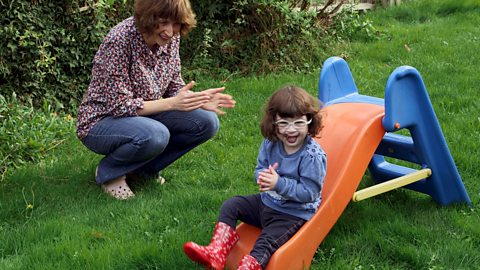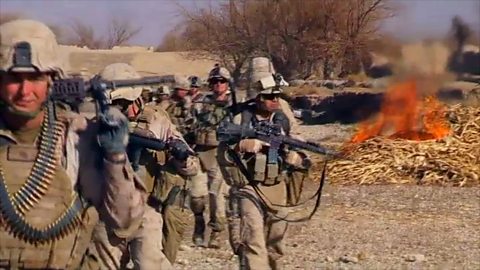Video summary
Christina's and James' life experiences have left them on different sides of a debate.
Twenty-two year old James was diagnosed with cystic fibrosis when he was five weeks old and is dependent on medication to stay alive - medication that has been tested on animals.
Christina, a passionate animal rights campaigner, believes that experimenting on animals is ethically wrong and should be banned entirely.
This poses the question: Is it ever right to experiment on animals?
The practice of animal vivisection in the UK is widespread and plays a vital role in the development of drugs for medicinal use.
This short film explores the moral and practical issues relating to animal testing and encourages students to reflect upon the way in which animals are used in the modern world. It presents both religious and secular viewpoints, surrounding how we should view our relationship with animals.
Thus, providing students with a spectrum of beliefs relating to the issues with which they can develop their own opinions and evaluate others in comparison.
This clip is taken from the ΒιΆΉΤΌΕΔ Two series, Matters of life and death.
PLEASE NOTE: THIS FILM CONTAINS IMAGES OF ANIMAL TESTING THAT SOME PEOPLE MIGHT FIND UPSETTING. TEACHER REVIEW IS RECOMMENDED PRIOR TO USE IN CLASS.
Teacher Notes
The clip provides two contrasting views towards animal experimentation.
James has cystic fibrosis and relies upon a significant amount of medication to continue to live. James' view is that animal testing is necessary in order to develop new medicines, which may ultimately reduce human suffering. He hopes that in the future, scientists will be able to significantly extend the lives of those will genetic illnesses or be able to cure them completely. James believes that if it were not for animal testing, he would not be here today and for that he is extremely thankful.
Contrastingly, Christina believes that the biggest injustice in the world is the way in which humans use animals as a commodity. Christina has spent time in the wild observing animals with their young and believes that they have a right to live their own lives. As she presents her case, she describes the treatment of animals within laboratories and there is footage used to evidence this which students may find distressing. Christina believes that as animals cannot consent to testing, it is inhumane and unethical.
The clip concludes with representatives from various faiths and humanist societies, explaining their views on animal experimentation and linking them to their belief systems.
Before watching the film:
You should preview the footage in order to familiarise yourself with the content and enable you to pre-warn students of its sensitive nature. Specifically, there is content which demonstrates the suffering of animals which students may find distressing to watch.
Additionally, as students and their families may well experience the effects of similar illnesses and be dependent on medication, you will need to approach with sensitivity and remind pupils to be empathetic towards others where there are differing viewpoints.
You may find it useful to introduce or revisit βethicsβ prior to watching the clip. You may wish to explore the following:
- What is an βethical issueβ?
- What should form the basis of out βethical decisionsβ?
- What is quality of life?
During clip:
You may find it beneficial to pause the video in order to check for understanding. The following questions make useful discussion points:
- What might life be like for James living with a condition such as cystic fibrosis?
- Why are animals treated differently from humans?
- Do we have the right to inflict pain on animals (could be linked to the idea of stewardship: to what extent do we have a duty to protect animals?).
- Is animal suffering justified if it relieves human suffering? (Could be linked to utilitarian principles).
- Is there a hierarchy on earth, meaning that humans are more important than animals?
- Would Christina feel differently if she were in James' position and depended on medication in order to survive?
- Do you think that animals can experience suffering in the same way as humans?
- What would life be like if we had not used animals to develop medicines?
- Should animals be tested on for all medications, or just those which save lives?
- Can animals ever be tested on βrespectfullyβ and βhumanelyβ?
- Do animals have souls?
- What other options might there be rather than testing on animals?
- What is empathy and how might we show it to animals?
Following on:
You could support students in consolidating their learning, deepening their understanding of the issue and applying exam skills in context. Suggested tasks:
- Lead a class discussion or debate around the question βIs it ever right to experiment on animals?β. This could be informal or more structured. The class could be divided into smaller groups and students could be asked to research arguments to represent a particular viewpoint e.g. Humanist, Hindu, Sikh. Alternatively, students could be asked to do their own independent research with some guidance, in order to participate in a free-flowing debate. This could also be carried out in the form of a βsilentβ debate, having students write down their responses on large sheets of paper or tables. Students could be encouraged to respond to each other to develop evaluative skills.
- Signpost students to relevant pressure groups and charities which support separate sides of the argument. Ask them to identify evidence to support both sides from a secular perspective, prior to exploring religious responses in more depth.
- In relation to religious responses, students could be presented with a collection of scripture or religious teachings relating to the religions which they are required to study. This could be in the form or a card sort (separating those arguments for and against) and they could then be asked to explain the rationale behind their choices.
- Organise and deliver a carousel task, allowing students to collate information regarding different religious viewpoints. This could be related to specific questions or they could be asked to fill out a grid which they could use to compare beliefs.
- Facilitate an in-depth study into one religious perspective (individually or in groups) and present this to the class who could take notes.
- Students could be asked to complete a βVenn Diagramβ in which they identify similarities and differences between two religious viewpoints.
This short film will be relevant for teaching Religious Studies.
This topic appears in OCR, Edexcel, AQA, WJEC KS4/GCSE in England and Wales, CCEA GCSE in Northern Ireland and SQA National 4/5 in Scotland.
Is it okay to have a child to save another? video
We hear from two people with opposing views before representatives of different faiths and religions explain their perspectives.

What are the rights and wrongs of abortion? video
An exploration of some of the ethical and moral questions around the issue of abortion, focusing on Anna and Marie, whose life experiences have left them on contrasting sides of the debate.

When is it right to go to war? video
We hear responses to this question from two people with contrasting opinions. This is followed by various perspectives on the question from religious and humanist leaders.

What are the rights and wrongs of the death penalty? video
An exploration of the ethics around capital punishment. Representatives of different faiths and religions explain their perspective on the death penalty.
